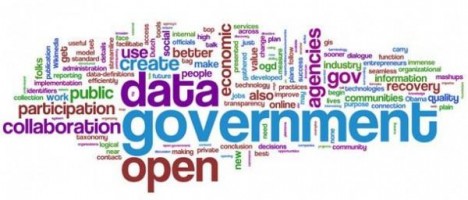Widgetized Section
Go to Admin » Appearance » Widgets » and move Gabfire Widget: Social into that MastheadOverlay zone
Open Government 2.0 – Creating a Model for Transparency in Government
The views expressed are those of the author and do not necessarily reflect the views of ASPA as an organization.
By Susanna Foxworthy and Lisa Blomgren Bingham
January 27, 2015
This is part one of a two part column on open government.
In April 2012, federal agencies released 2.0 versions of Open Government Plans (OG 2.0). These updated documents outline initiatives to enhance government transparency, participation and collaboration for 2012-2014. An analysis of the 25 plans show that agencies continue to focus efforts on using technology to leverage help from the public and stakeholders, much like the 1.0 versions (OG 1.0) adopted in 2009. However, there is some evidence of genuine deliberative public engagement, collaboration or co-production of public services and policy.
 In OG 1.0 plans, agencies made the first steps in creating a more open government. This included increasing transparency and using technology to engage the public. The OG 2.0 plans suggest that agencies can move toward more deliberative, participatory and collaborative governance. Recommendations for improvement include the following:
In OG 1.0 plans, agencies made the first steps in creating a more open government. This included increasing transparency and using technology to engage the public. The OG 2.0 plans suggest that agencies can move toward more deliberative, participatory and collaborative governance. Recommendations for improvement include the following:
- Use better design principles for online and face-to-face public engagement.
- Make engagement through competitions and challenges more meaningful.
- Identify programs to use new collaborative platforms.
- Integrate co-production into agency initiatives.
- Build evaluation into program design.
Six trends emerged in OG 2.0 plans, arrayed generally from less to greater collaboration with the public and stakeholders:
- Competitions or awards.
- Enhanced or collaborative transparency.
- Apps sharing and development.
- Wikis or knowledge development across sectors.
- Online engagement for policy development through social media.
- Platform spaces or apps for collaboration.
Eighty percent of agencies plan to use competitions or awards to increase citizen participation and invite innovation. These range from a low level of engagement with the public, such as photo contests or icon development, to a high level of engagement.
At the higher end, the National Aeronautic and Space Administration (NASA) awarded $1.35 million to individuals for developing a more fuel-efficient aircraft in the 2011 Green Flight Centennial Challenge. The agency plans to continue these competitions, which move beyond the goal of raising public awareness to leveraging public work to achieve agency goals.
One of the goals in OG 1.0 plans included publishing high-value data sets. Although agencies succeeded in releasing these to the public, the datasets did not use common formats or fields. In OG 2.0 plans, 72 percent of agencies plan to improve data transparency by making it user-friendly, visual and standardized.
For example, the Department of Energy (DOE) released a beta website that allows citizens to test and comment on data visualization enhancements. This crowdsourcing technique provides the DOE with feedback on how to most effectively present data. The National Science Foundation (NSF) also proposes a data standardization initiative across all agencies. These efforts to enhance data will make it more accessible to citizens and make it easier to understand for the purpose of providing meaningful feedback.
In OG 2.0 plans, 48 percent of agencies plan to engage citizens in information gathering and sharing through applications on computers, smart phones and tablets. These apps may enhance open government efforts by making data more accessible and allowing citizens to provide feedback more easily.
The Department of Interior (DOI) proposes developing a National River Atlas, a Web-based multimedia project, which will provide information about the nation’s river resources and support restoration and recreation. It will include a geospatial tool that allows individuals to monitor and learn about restoration in waterways.
This initiative moves closer to notions of collaborative governance as citizen co-production of goods. Other agencies plan to leverage citizens in competitions to create apps that focus on data or services provided by the agency.
In part two, we will discuss how Wikis and knowledge development allow citizens to contribute to policy development and can allow the public to co-produce goods.
Authors: Susanna Foxworthy is a research assistant at the Indiana University School of Public and Environmental Affairs, Bloomington. She earned her MPA from IU, specializing in nonprofit management, and investigates open and collaborative governance.
Lisa Blomgren Bingham is the Keller-Runden Professor of Public Service at the Indiana University School of Public and Environmental Affairs, Bloomington, Indiana and a fellow of the National Academy of Public Administration.


Follow Us!